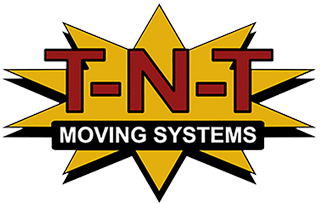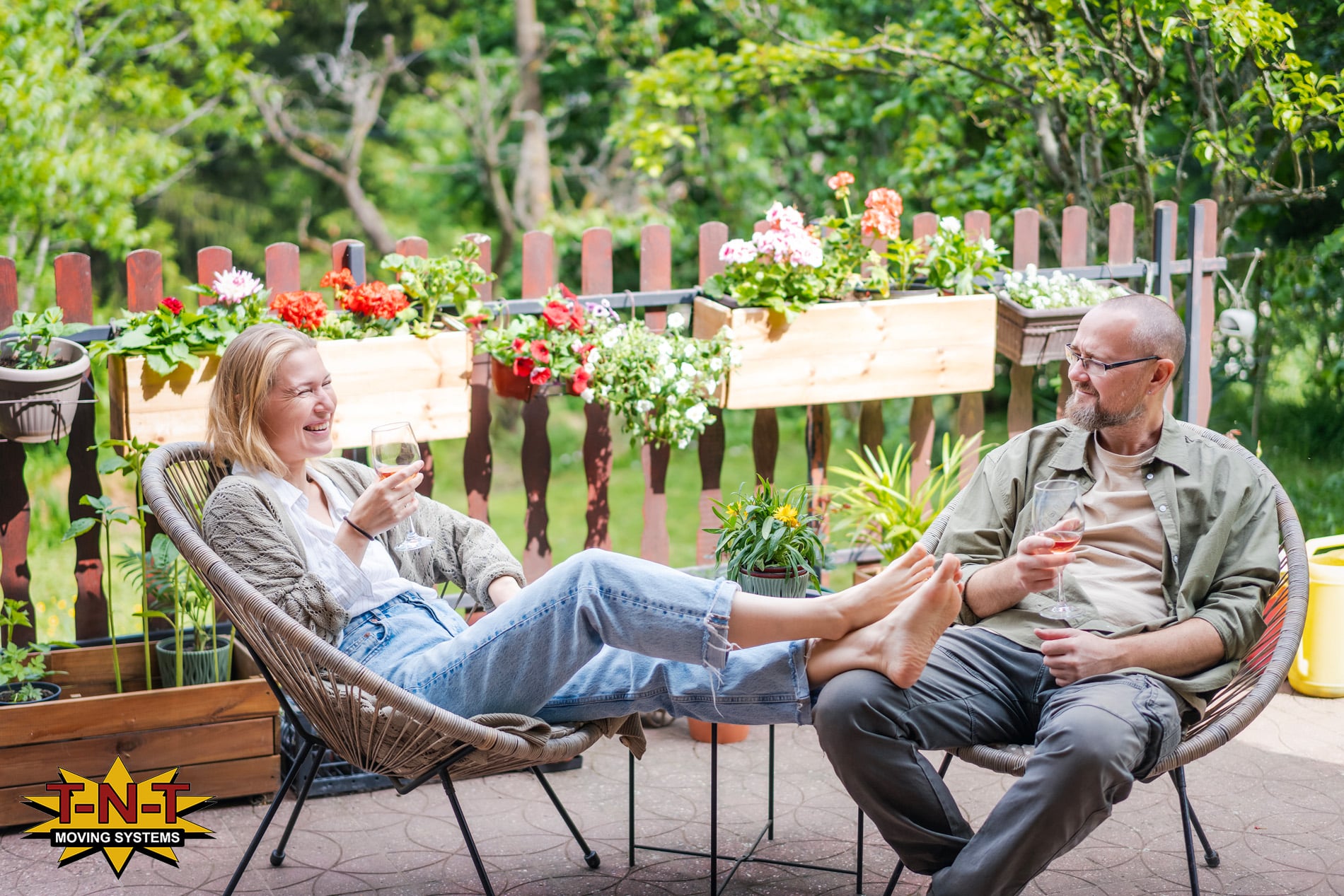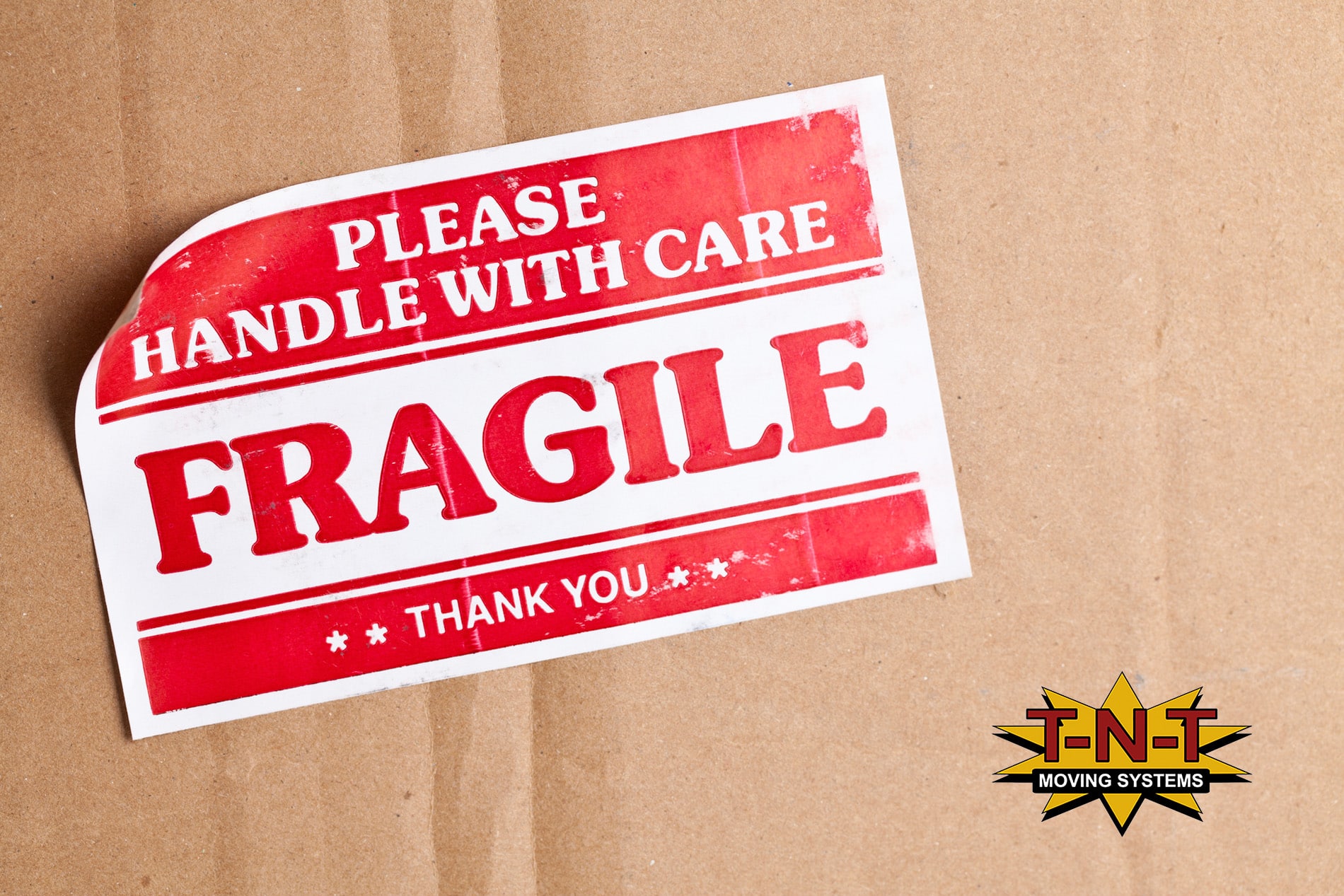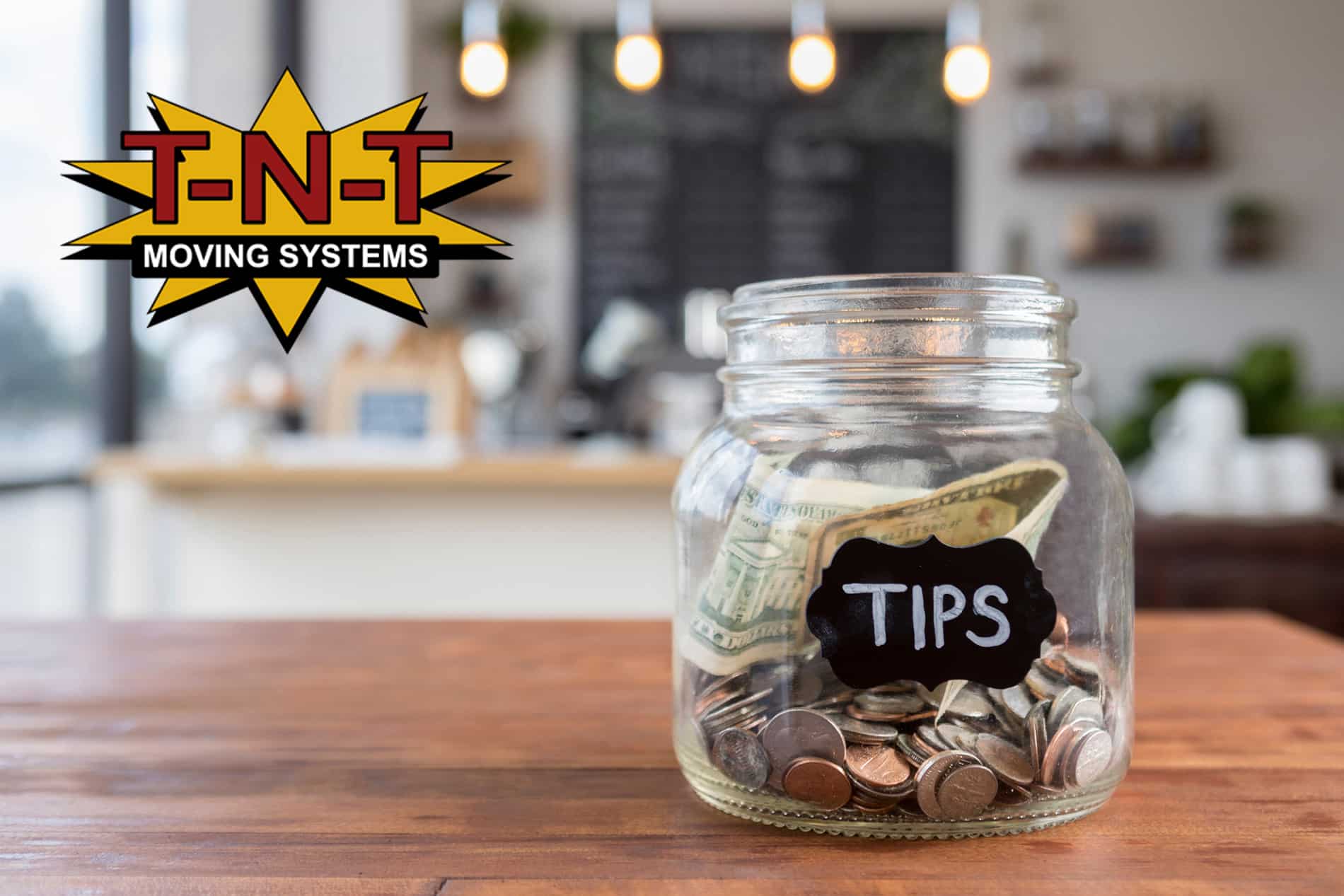Managing Stress During a Move
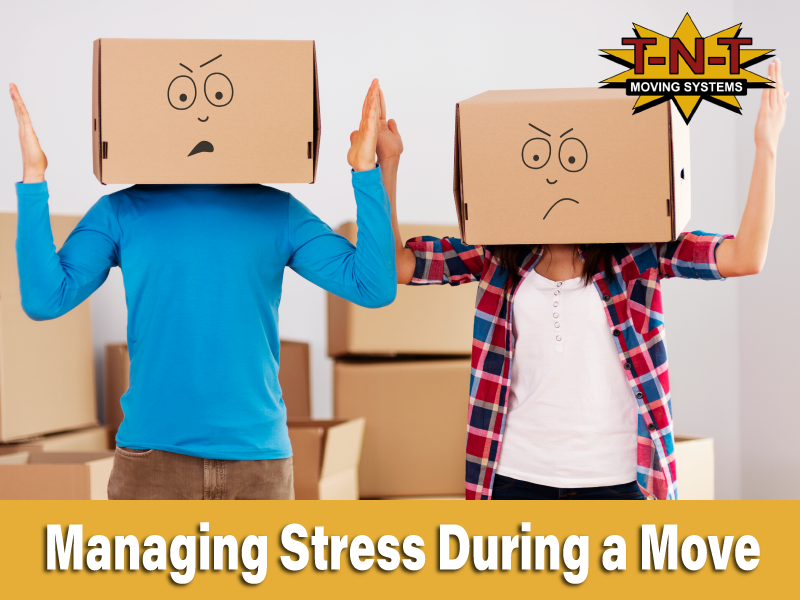
Stress is a normal human reaction under demanding circumstances. Moving will increase your level of stress, and it’s important to acknowledge the feeling as it happens. That’s why at TNT Moving Systems, we recommend setting yourself up for success with a moving plan, help, and support, as well as anticipating the stress ahead of time so that you have strategies to combat it ready to go.
Understanding that stress is likely to occur at some point over the course of your move means that when it does happen, you’re less likely to let it set you back. Don’t let stress deter you from your move!
1. Make a plan for packing, and set deadlines for yourself.
Provide yourself with ample time to move, and then some extra for unforeseen incidents.
One of the largest reasons for moving stress is time – or rather, a lack of time. If you’re able to allow enough time to get everything done, you can make your move a lot less stressful. You can go off of the following estimate how many days it will take to pack up your home:
– Studio or One Bedroom Apartment: 2 days
– Two Bedroom Home: 3 to 4 days
– Three Bedroom Home: 5 to 6 days
– And so on
Keep in mind that this estimate isn’t saying it only takes 5 to 6 days to pack a three-bedroom home here and there, like an hour or so each day. Instead, it’s estimating 5 to 6 fully dedicated days of packing, with breaks for meals and sleeping.
Now, for breaking down the number of boxes for each sized home, we estimate it takes around 20 to 30 minutes for each box. You can expect the following for each:
– Apartment: 30 to 40 boxes
– Town House: 50 to 75 boxes
– Single family home: 100 to 150 boxes
Alternatively, you can hire professionals to pack for you.
TNT Moving Systems offers the service of packing your home for you. If you don’t have the time, ability, or simply don’t want to pack, for an additional charge we will pack the entirety of your home. The cost of professional packing adds about 75% to the total cost of the move but includes the labor and materials involved in packing.
Don’t forget to carve out time for repairs and cleaning in the old home.
One of the most time consuming tasks that we have to save until last is the cleaning and making repairs in the old home. When it comes time to clean, it’s easy to get overwhelmed by the number of nooks and crannies, or those final belongings hanging out here and there that get in your way.
2. Use a labeling process for your belongings.
There’s nothing worse than moving into your new home, only to fall into the trap we’ve all experienced – where is my stuff, and which box is it in? A truck full of blank boxes is a logistical nightmare as well. The key is to tackle this problem before your boxes are moved into the new home, and that’s by labeling everything!
Develop a color-coding system
Whether you are already equipped with different colored packing tape, have a rainbow of creative colored markers, or have an abundance of stickers, color-coding your boxes room by room is an easily visible way to keep everything organized. We recommend writing on the top and multiple sides of your boxes so that the labels are easily visible. This will make the moving day so much easier so you and your movers won’t need to turn over a box to figure out where it needs to go.
Use detail
Make sure that your markers are waterproof (Sharpies are always a safe bet). You may want to include the room it should go in and whether or not it is fragile. Don’t be afraid to add detail either – just labeling a box kitchen isn’t going to be super useful once you’re unpacking and wanting to organize your cabinets. Add details like “plates and cups” or “utensils and miscellaneous drawer.” Just make sure your labels are legible and make sense to you!
Labeling makes unpacking easier as well
Labeling your boxes can help movers put boxes into their respective rooms, rather than piled up in a front room for you to move later or having everyone ask you where to put a box down. You’ll keep your sanity intact, and once you’re ready to unpack, you’ll be organized and stress-free!
Create a numbering system for inventory
If you’re worried about losing boxes in a cross-country move, want to know exactly where certain items are, or you are just motivated to stay very organized, you can label each box with its destination as well as a number to correspond to your inventory. This can be as simple as a gridded piece of paper or you can use Microsoft Excel. If you use a numbering system, you’ll know how many boxes are supposed to be delivered to each room, where to find your favorite coffee mug or bath towels, and keep track of all of your belongings.
3. Focus on one room at a time.
We have all been there, with our moving date set, standing in the middle of your home and looking around at your belongings – clothing, furniture, appliances, jam-packed pantry, books, knickknacks, that donation pile you forgot about a few months ago – and being totally overwhelmed. However, if you focus on organizing and packing one room at a time, it will drastically reduce your stress. Completing one room at a time will also make a big, noticeable dent in your ultimate goal – packing your entire home. Packing one room at a time can also help you keep your boxes organized, which will save you a great deal of time later as you unpack.
Start with the room that you use the least on a day-to-day basis. So, if you mainly eat at a home and are not set to move for a few weeks, do not start in your kitchen! A kitchen is usually the most highly trafficked room in the house, and there are going to be items that need to remain accessible to the home right up until moving day (with some exceptions, of course). Instead, start in a lower-trafficked area like a guest bedroom, a junk/storage room, a closet, or an attic.
4. Use a moving checklist.
The truth is: everyone struggles with getting stuff done. Some of us struggle even more with the step before that: figuring out what to do! A to-do list or a checklist it’s a timeless solution to work out what needs to be done and in what order. As we do the tasks, we then cross them off one-by-one. Studies have even shown that people perform better when they have written down what they need to do!
Checklists are a classic but critical way to reduce stress on your moving day. Checklists are super helpful for when you are juggling the endless tasks of the moving process and do not want to forget to take care of the important things. Psychologically, making a checklist has numerous mental health benefits. For example:
– Ticking off items and tasks reassures you that you’re on schedule and haven’t forgotten anything vital.
– Checklists help you sort out what your priorities are, and elevate items that are the most important.
– They can serve as a form of motivation since as you check items off the list, you will see yourself making progress and have the encouragement to continue. This can be especially important when surrounded by an endless sea of boxes, paper, donations, junk, and more!
– Checklists can provide consistency among the chaos. By checking off the items you accomplish each day or week during your moving process, you’re eliminating the chance that you’re forgetting to do something or the worry that you aren’t on track.
– Checklists can create a feeling of productivity and accountability. Achieving a task makes us feel good and productive – humans like to feel a sense of accomplishment, especially on long, grueling, and sometimes emotional tasks like moving. In turn, checklists can also provide a sense of accountability. Sometimes relying on our own willpower and drive alone inside of our head isn’t enough. A checklist is a strong but gentle physical reminder of the tasks that need to be completed.
Moving involves a lot more steps than simply packing up your house or physically moving the items out on a certain date. We recommend using an accessible whiteboard or small notebook that you can carry with you at all times to list out the things you need to do before your moving day. If handwriting down items is not your style, then the standard notes app on your phone is also a great tool to organize your to-do list. That way, whenever something pops into your mind that you need to accomplish, you can write it down right away.
Whether you need to list out disconnection and activation dates for utilities, when to drop off the cable box, or organizing donation or junk pick-up and drop-offs, a checklist is going to put your upcoming tasks into perspective. Once you have the to-do checklist, we recommend assigning those tasks with deadlines and also inserting them into your calendar. Ultimately, the list of to-do’s for moving can be overwhelming. If you divide those tasks up into an achievable number of items to accomplish each day, you’re going to lower your stress – especially if you’re avoiding trying to complete everything the week of moving.
5. Pack smarter, not harder.
Save yourself time where you can, and don’t pack what you shouldn’t need to! We have a number of recommendations to save you stress, time, and money, as well as recommendations on what you should let your movers pack for you. Professional movers will be able to move certain items more efficiently, quickly, and safely, and truly make it worth the extra cost.
For items you should let your movers handle packing, we recommend:
– Large appliances (fridge, washer, stove, dishwasher)
– Mirrors
– Lamps
– Large pictures
– Flat screen televisions
Dressers can be wrapped, so avoid packing clothes already tucked neatly into drawers. Additionally, clothing already hung in your closet can be moved directly into a wardrobe box. You can purchase a wardrobe box from any hardware store. Wardrobe boxes do take up a lot of space in the moving truck, so maximize your wardrobe box by filling the bottom with bulky items like shoes, sweatshirts, sweaters, fleece, jeans, jackets, belts, and purses. If you don’t want the filler items to touch the hanging clothes, you can lay a blanket, shopping bags, pillows, or linens down to create a divider before sealing the box.
If you don’t have a ton of clothing or are making a shorter move, placing trash bags around a group of hanging clothes and then tying at the hanger is also an efficient way to get clothing moved without the process of unhanging and rehanging just to move in a box.
Place more focus on the items that are more difficult to pack, like breakables (e.g. dishes, vases, glass, and porcelain items and decorations, electronics, etc.). You will not only want to purchase the proper boxes and packing materials (paper, bubble wrap) but also spend the time to properly wrap and package each of the items. For some larger fragile items, you can knock out two birds with one stone by wrapping them in towels, blankets, and other linens.
When packing breakable boxes, you can save on bubble wrap by filling gaps in the box with balls of socks, rolled tank tops, gloves, etc. You may lose some of the organization of keeping your smaller clothing items contained in one box, but you’re protecting other items by reducing the risk of things breaking due to jiggling around in the box.
6. Break your packing into chunks of time, and be gentle with yourself!
Packing isn’t fun or easy, but it can be manageable if it’s broken into segments. For example, if you pack for a few hours in the morning, then take a break to watch TV, and eat your lunch. Pick back up where you left off, giving yourself breaks whenever you’re feeling tired or overwhelmed. You can make packing more enjoyable if you play your favorite music, shows, movies, podcasts, or books on tape as you pack – entertainment definitely makes the time go by faster!
7. Leave a few boxes unsealed for the day of your move.
The moving day inevitably leaves a few odds and ends that you have overlooked. You may or may not have an extra box lying around, or realize you have a few boxes already sealed that had extra space for that random shoe or coffee pot. To avoid this, leave a few of your final boxes with additional space unsealed so that you can pack those last-minute items once the movers arrive.
Contact the professionals at TNT Moving Systems today and see how they can make your next move less stressful!
